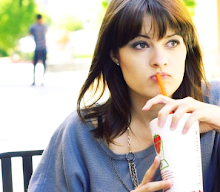Color theory is about a-lot more than the color wheel we learned in first grade. In high-school art classes kids are often taught about color mixing with pigments, but beyond how to mix paint, what do we need to know about colors that isn't already obvious?
 |
| Marilyn - Andy Warhol |
Andy Warhol spent much of his career looking at pop culture and putting his own spin on it to emphasize the effects of consumerism. In his famous Marilyn portraits Warhol tweaked Marilyn's natural colors in odd ways, but this design is valuable in more than just it's message. The image of Marilyn is something recognizable as beauty, but with the change of colors some of these copies look almost grotesque. It is incredible but even with the most deformed colors in this piece, the image of Marilyn is still recognizable. It is also worth questioning why certain images in this piece are pleasing to the eye and others are repulsing. We have so much invested in color when we look at art.
Rene Magritte's famous work "
The Treason of Images" touches on how image can deceive. Color in this same way has the ability to trick the eye. The optical illusion below gives a simplistic hint at the potential color has in tricking the mind. The two labeled squares are actually the same color but they don't appear to be the same at all because of the context of the image.
Beyond context, color actually has the ability to change the way that other colors around it appear. A bright color surrounded by muted and unsaturated tones will pop out. Artists can utilize these tricks of color to convey a message. Making this kind of emphasis can really grab attention and say something to the viewer.





0 comments:
Post a Comment